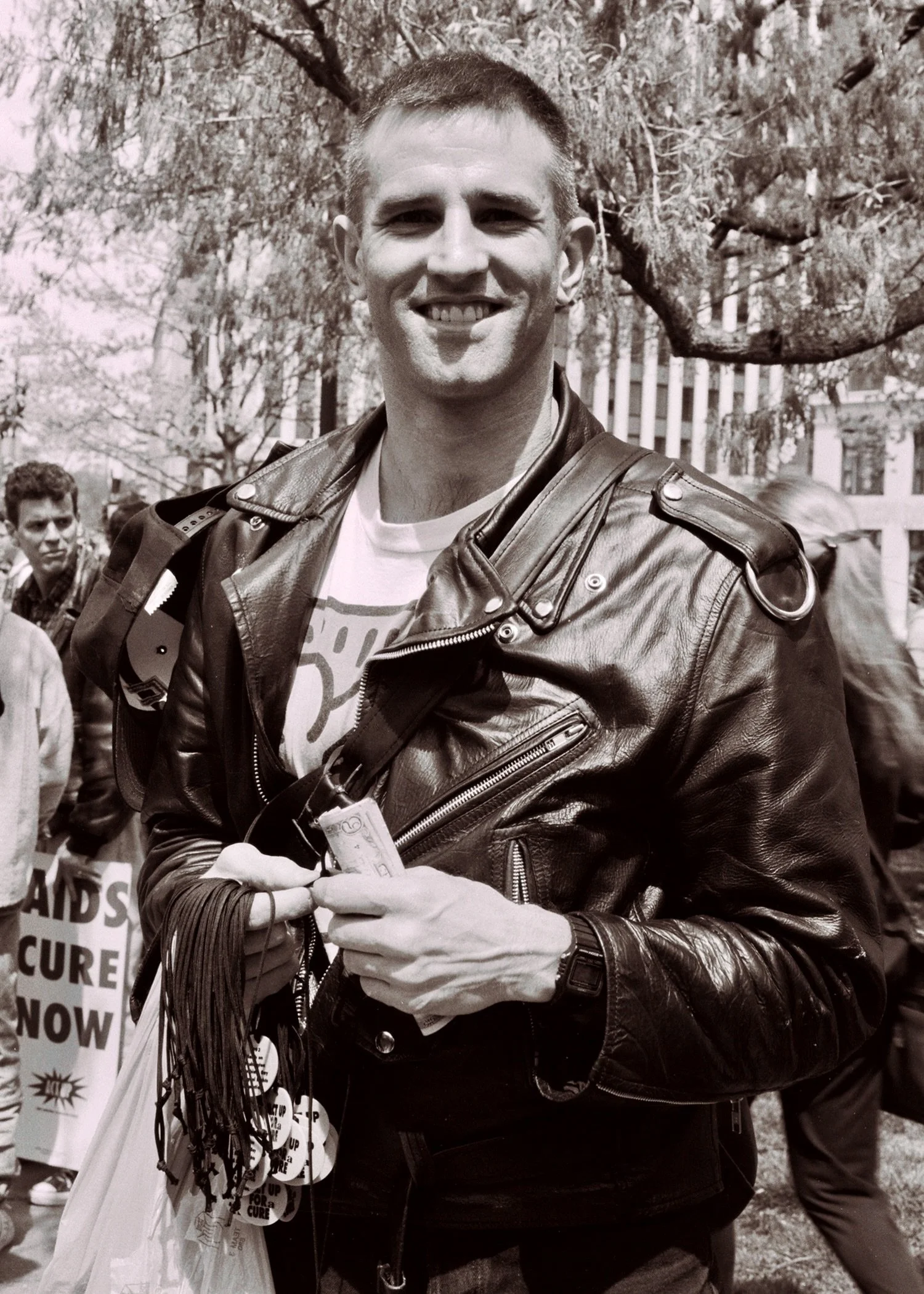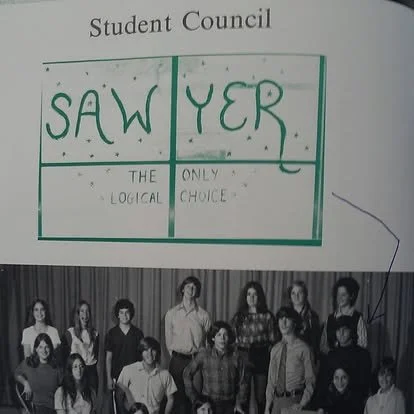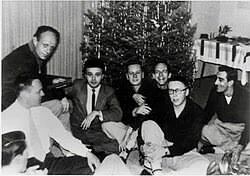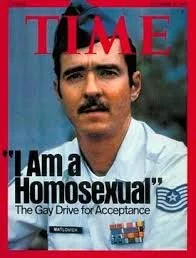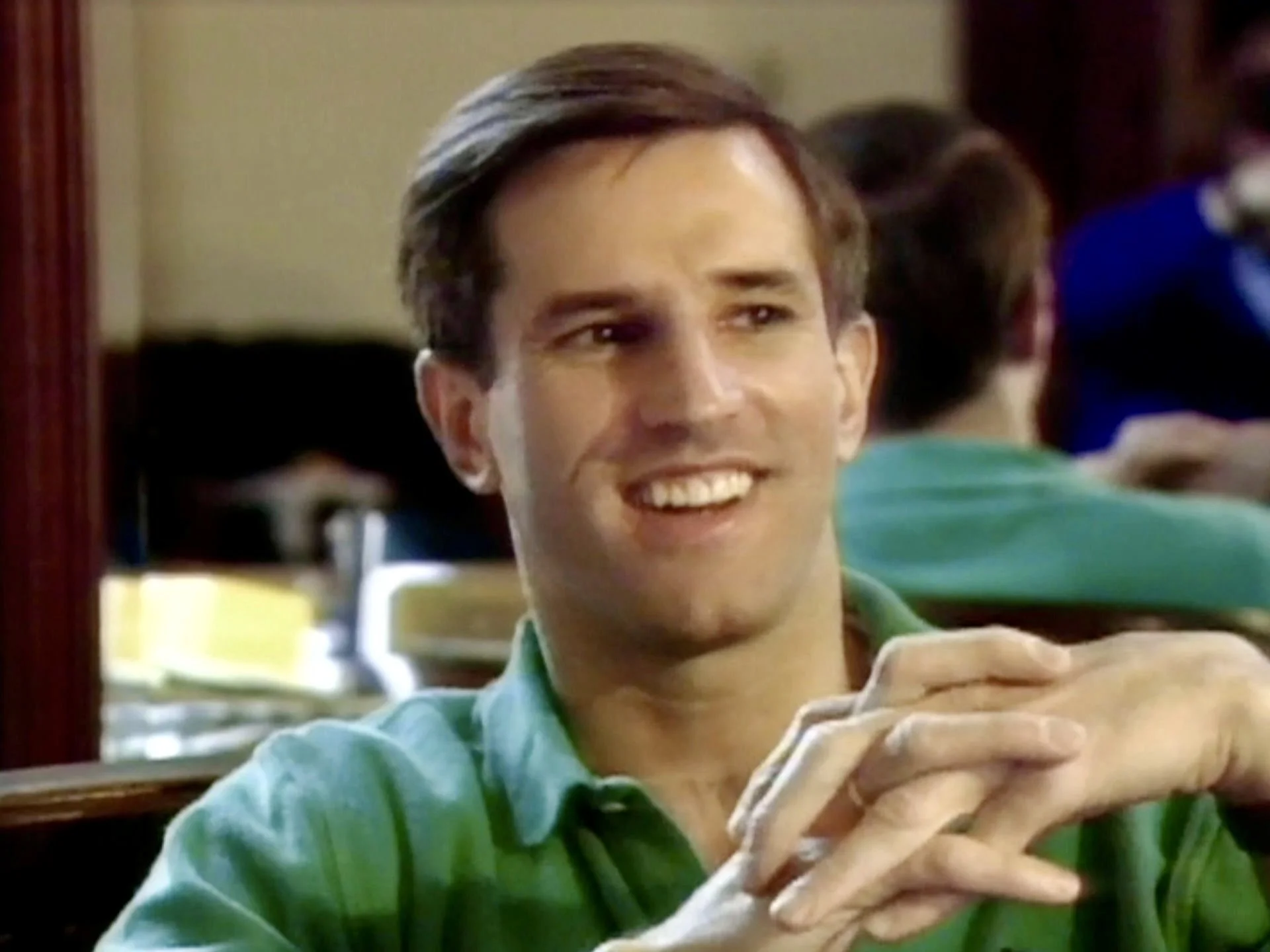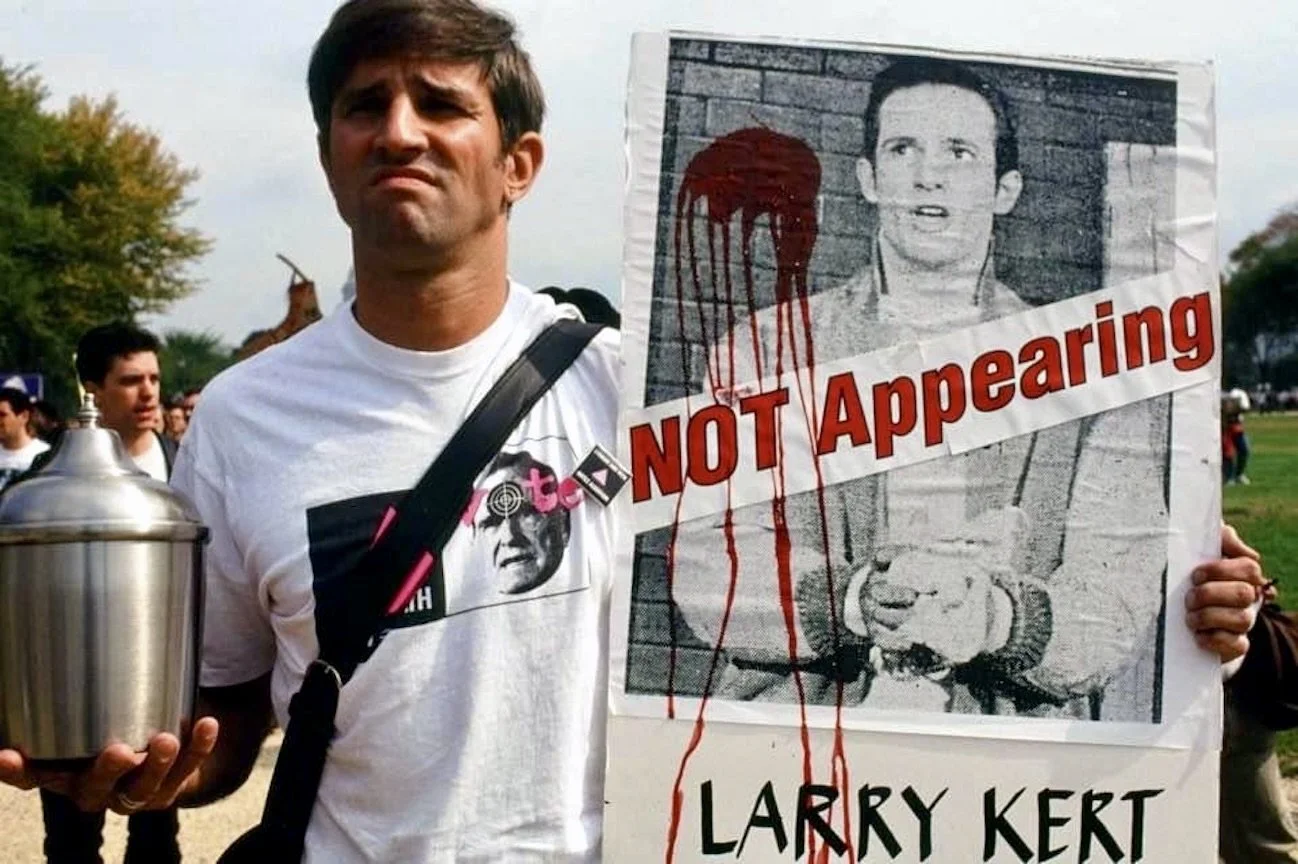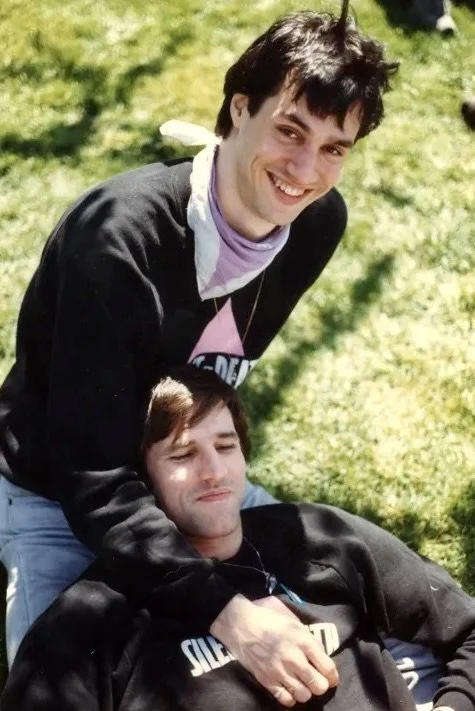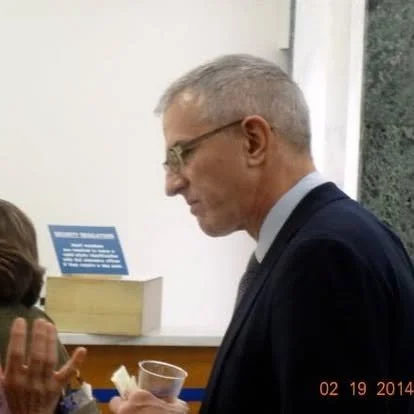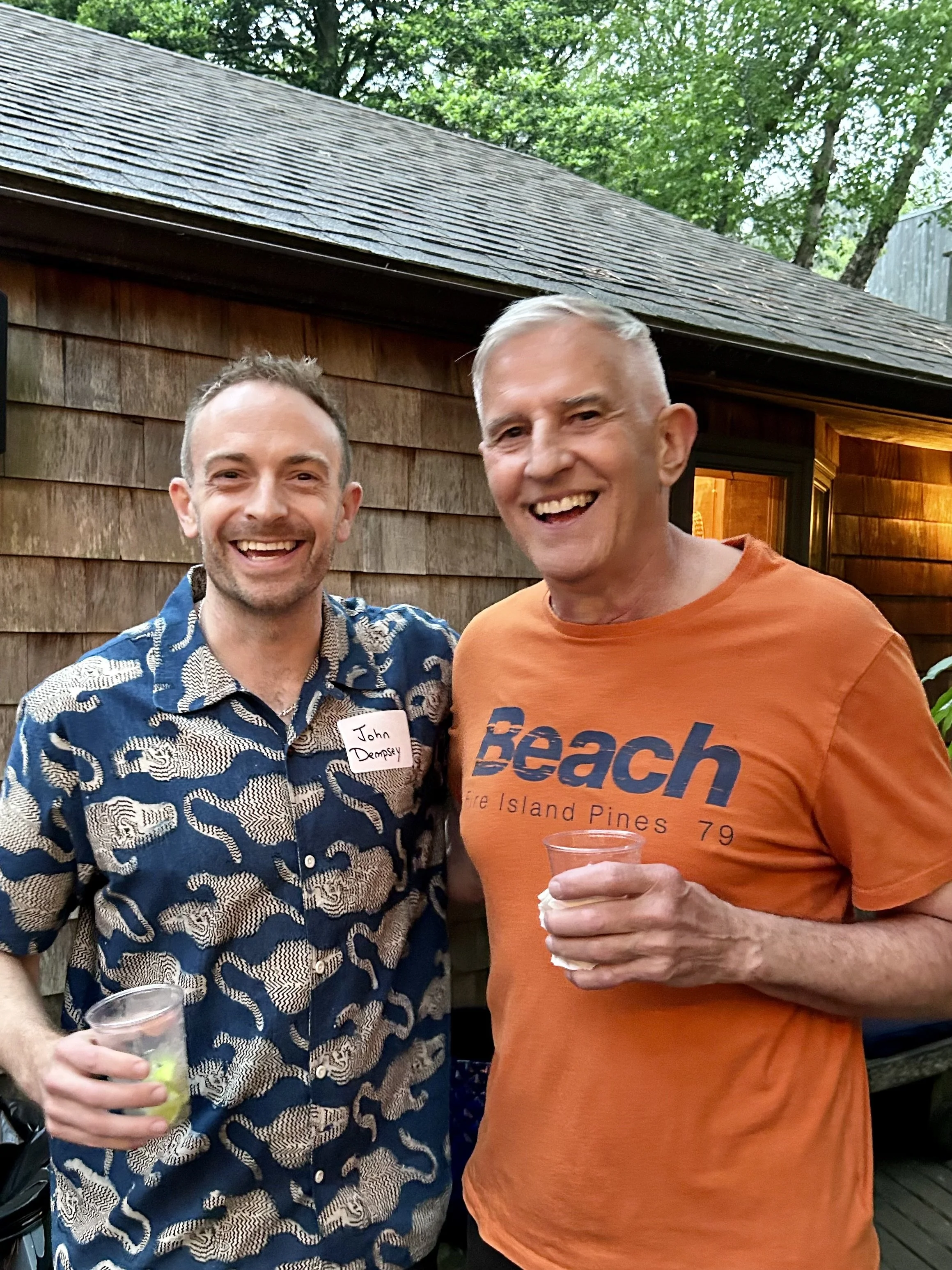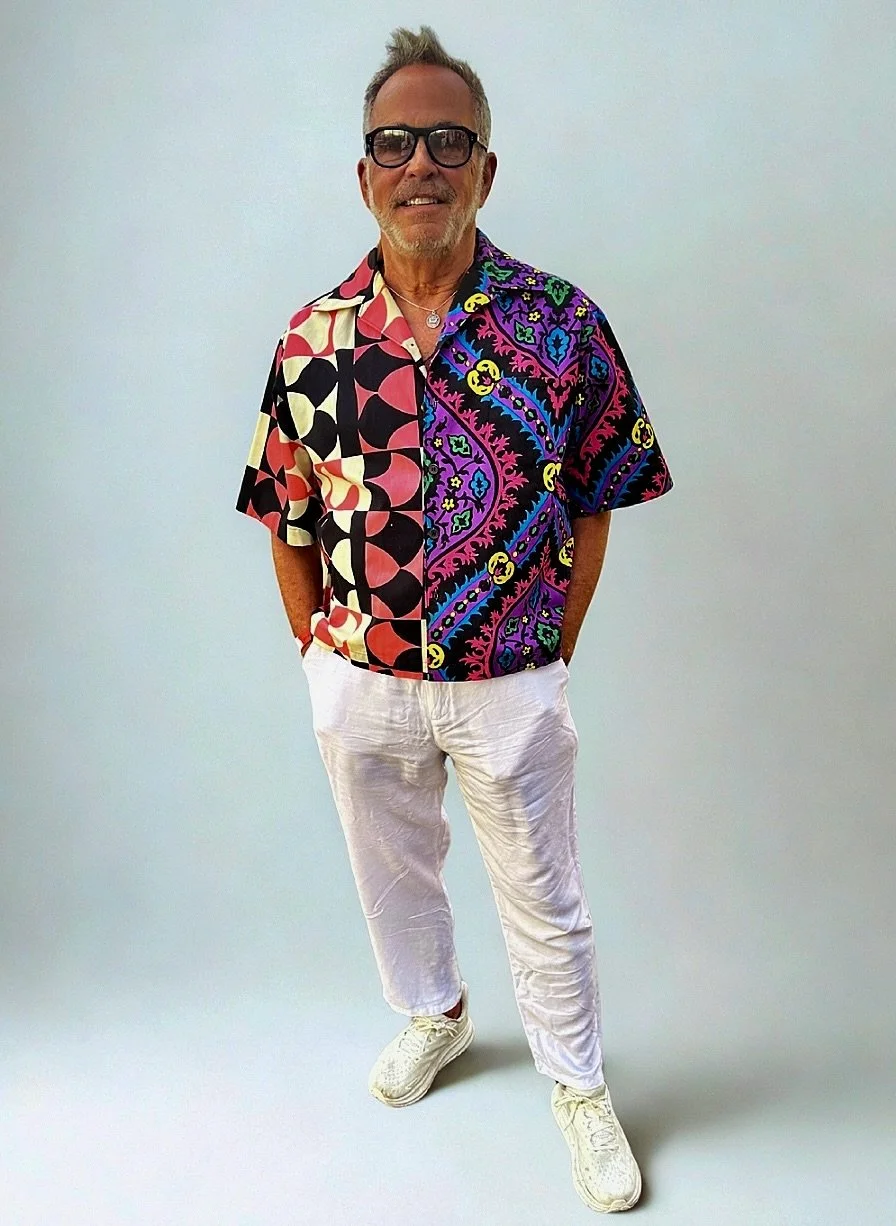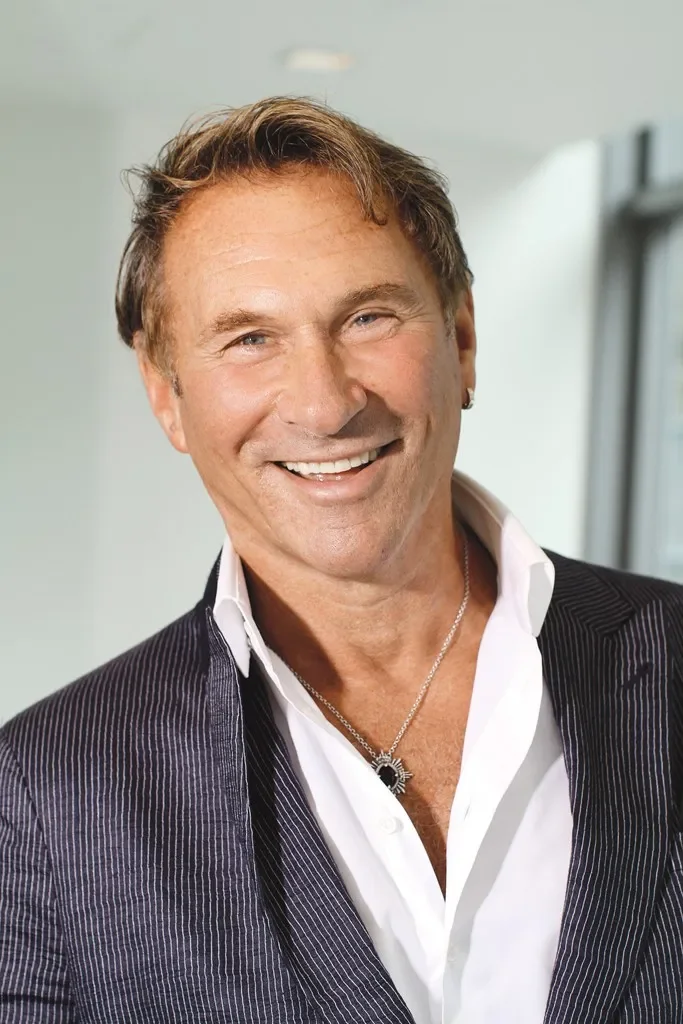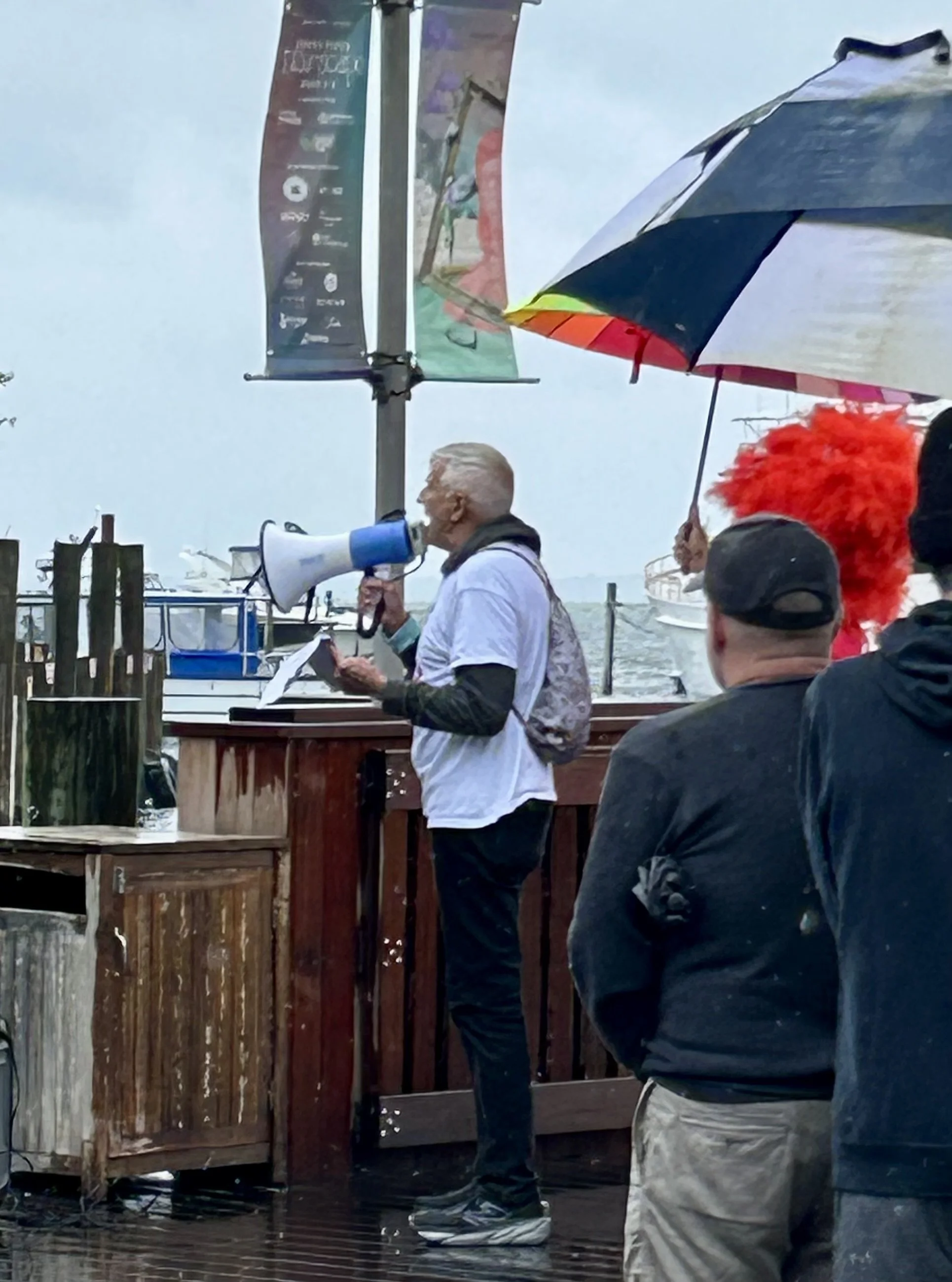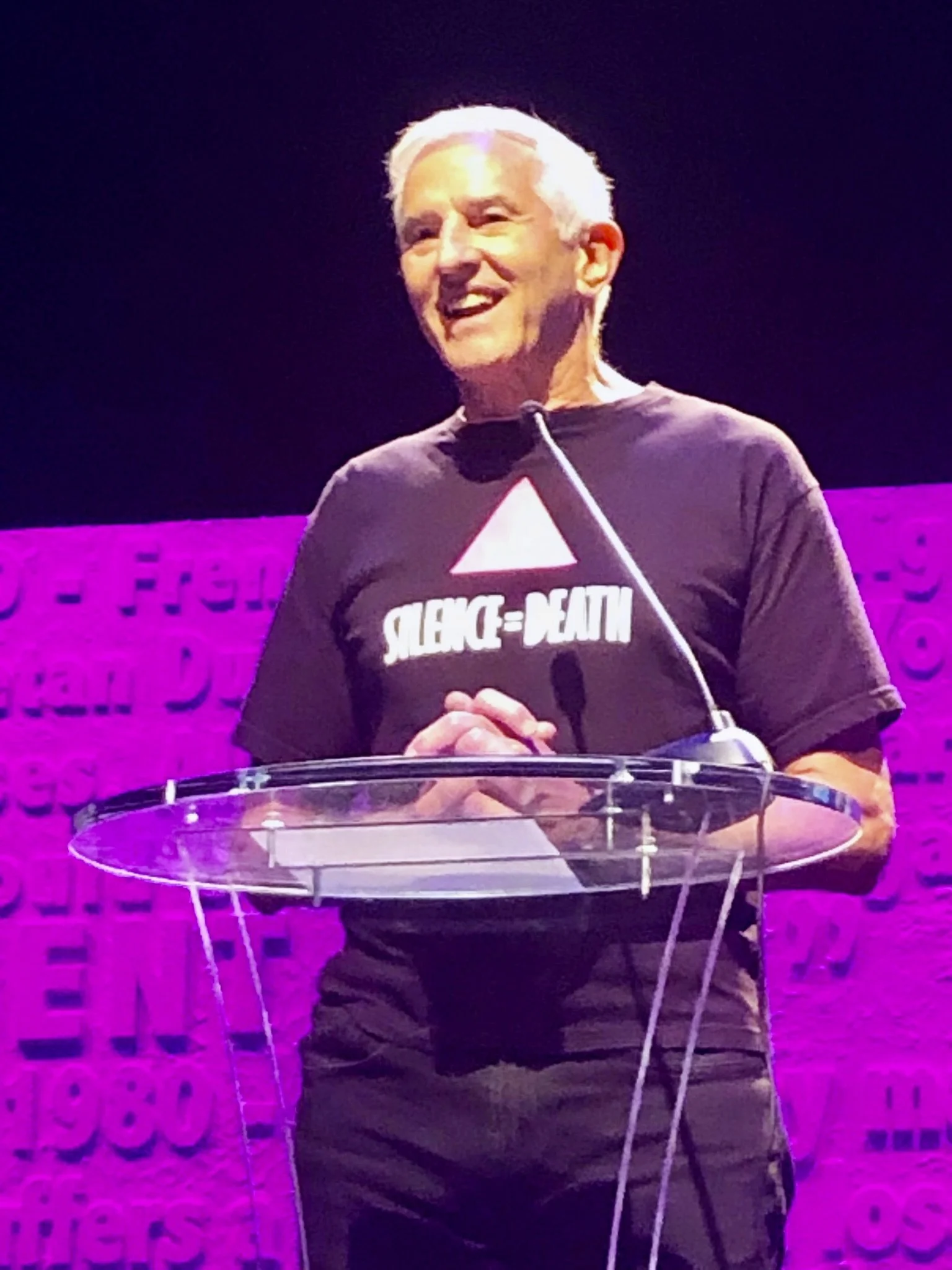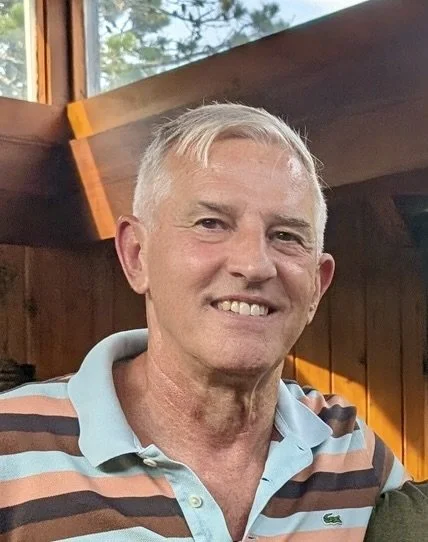Pines Profile - Eric L. Sawyer (b. 1954)
A Life of Defiance, Service, and Legacy
“Eric is a true hero. What he did – and still does -- the sacrifices he makes and what he has accomplished for our community, is simply remarkable.”
- Jim Pepper, Former Board Member GMHC, and Founder of Stonewall Community Foundation.
Photo courtesy of The Outwards Archive
A trailblazing AIDS activist, global health leader, LGBTQ+ rights advocate, and Fire Island Pines community builder, Eric Sawyer has lived a life marked by courage, resilience, humility, and an unwavering sense of justice. His contributions to Fire Island Pines, New York City, the LGBTQ+ community and the world are nothing short of remarkable. From humble roots in upstate to New York to touring the world in the fight against AIDS, his story could be headlined: “Against All Odds.”
From Sissy to Jock
Born in 1954 in Binghamton, New York, Eric is the son of working-class parents who had little money but high expectations.
Sensitive, introspective, and different from his peers, he was frequently bullied and ridiculed for being a "sissy". However, a late growth spurt changed his standing, and he became a star athlete and student body president.
Student Council election. Photo courtesy of Eric Sawyer
Despite this success, the toll of his early years -- a mix of shame, rage, and awareness of injustice -- stayed with him. These feelings would later surface to propel him into the front lines of one of the greatest public health movements in history.
Early Activism
Eric attended university at SUNY Oneonta where he got a degree in psychology.
It was there that he was first exposed to members of the Gay Liberation Front and the Mattachine Society.
Members of The Mattachine Society. Public photo.
These groups were making the case that being gay was an acceptable lifestyle and that you could be gay and have normal adult relationships. It was a message that had a big impact on him.
After SUNY Oneonta, Eric went to graduate school at the University of Colorado in Boulder. It was a conscious decision. Colorado felt freer, and Boulder had become a hotbed of early LGBTQ+ organizing, in part because poet Allen Ginsberg had helped start a gay rights group there.
Alan Ginsberg. Photo courtesy of Lapham Quarterly.
Eric came out and began connecting with early figures in the gay rights movement, including trailblazers like Dave Kopay, the former NFL player; Tim Gill, the tech entrepreneur and philanthropist; and Leonard Matlovich, a decorated Vietnam veteran discharged for being gay.
Leonard Matlovich. Photo courtesy of Time Magazine
He started giving public lectures about gay identity, participating in marches for gay rights, and even attended a straight dance with gay friends as a form of protest. Very importantly, he came out to his family by letter in his second year. Their response was simple but life-changing: they loved and accepted him.
Eric at a gay rights march. Photo courtesy of Eric Sawyer
New York City
In 1980, Eric moved to New York City where it was easier to live as a gay man. By day, he worked in compensation and benefits for major firms like American Standard, Citibank and Towers Perrin Forster.
In those days, employment discrimination was rampant, and Eric chose to keep his sexuality quiet. By night, and on weekends, he pursued a passion of buying and restoring run-down real estate, including a Harlem brownstone. Eventually he would flip more than 15 properties in both New York City, Update New York, and Fire Island.
Eric Sawyer. Photo courtesy of Frameline
Beneath the excitement of a new life in New York, an invisible enemy was lurking. Eric had suspected he was HIV-positive as far back as 1980. In those days, however, there was no definitive test for HIV, and little was known about how it spread and how it could be prevented.
As luck would have it, Eric has been introduced to author and activist Larry Kramer by a gym buddy who saw him reading Kramer’s classic Faggots. Theirs was a life-long friendship.
Eric enjoyed a lifelong friendship with Larry Kramer. Photo courtesy of Eric Sawyer
It was Kramer who gave Eric his first lessons on AIDS and safer sex. By then however, Eric and many around him were already HIV-positive.
Article by Larry Kramer in now defunct New York Native Newspaper. Public image.
AIDS
In 1984, Eric's partner, Scott developed Kaposi’s sarcoma. The visible lesions became a cruel public stigma. The couple was harassed, spat on, and rejected from restaurants. Scott’s law firm, Winthrop and Simpson, supported him. They allowed him to work from home and eventually permitted his secretary to serve as his caregiver. Eric’s own employer was less compassionate, denying him the work flexibility he needed to care for Scott. That insensitivity came to a head when Eric was denied time off to accompany Scott on a trip to visit his mother. Scott made the trek with his secretary but sadly died enroute on July 16, 1986.
The hurt and anger that followed Scott’s death turned to action. Eric reached out to Larry Kramer and became involved with ACT UP (AIDS Coalition to Unleash Power), a defiant, disruptive, and lifesaving movement that challenged government inaction and corporate greed
Eric with early ACT UP organizers in 1987. Photo courtesy of Eric Sawyer
Although he would soon develop full blown AIDS and have to go onto Long Term Disability, Eric was on the front lines. He was elected to ACT UP’s coordinating committee and helped plan its activities.
He staged die-ins at St. Patrick’s Cathedral, carried the dead bodies of AIDS victims in open coffins in New York and Washington, DC, and helped scatter the ashes of others onto the White House lawn.
Eric at White House protest circa 1987. Photo courtesy of The Outwards Archive
Eric with friend Frank Jump. Photo courtesy of Fading Ad Blog.
What is important to note is Eric’s activism was strategic. He understood the good cop/bad cop dynamic. Radicals drew attention and outrage, while more moderate leaders used that pressure to gain a seat at the table.
Jim Pepper, who was in the fight wearing the “White Cowboy Hat” as he describes it, coordinated discreetly with Eric on the disruptions. The brilliant strategist and consummate corporate executive he was, Jim used the disruption to secure meetings with officials and business leaders.
Jim Pepper. Photo courtesy of Jim Pepper.
With a master’s degree in public administration as well as extensive corporate experience, Eric was able to participate as needed. It proved to be an effective strategy as both governments and corporations began to take steps to fight the disease.
But for all the energy he invested in ACT UP – and the success they had -- Eric also knew protest wasn’t enough.
Housing as a Human Right
Informed by his own real estate experience and his time living in Harlem where many AIDS victims were becoming unhoused, Eric saw homelessness among people with AIDS as an urgent but solvable problem. He helped start the ACT UP Housing Committee and over time, along with Keith D. Cylar, Charles King, and Virginia Shubert, spun it off into Housing Works in 1990. Today, it is the largest AIDS housing provider in the U.S.
With allies like Doug Dornan, Gina Quattrocchi and encouragement and guidance from Jim Pepper (who had deep expertise in how public money could be accessed), Housing Works provided not just shelter but dignity for thousands of New Yorkers living with HIV/AIDS. With their help Eric crafted ways to secure funding from the government to address the housing crisis and did not shy away from serving intravenous drug users (e.g., providing clean needles to active users) even though it put the project at risk.
Going Global
By the mid-1990s, lifesaving antiretroviral drugs were available, but only to the wealthy in the developed world. Eric was outraged by the inequity. He co-founded ACT UP Global Access Committee, which morphed into Health GAP (Global Access Project) to fight for affordable treatment in developing countries.
Later, he joined the staff of UNAIDS, where he helped shape international policy and spearheaded the “Three Zeros” strategy:
Zero new HIV infections
Zero discrimination
Zero AIDS-related deaths
Eric at UN AIDS conference in 2014. Photo courtesy of Eric Sawyer.
He traveled the world, moving from congressional hearings to African AIDS conferences to United Nations panels, all in service of amplifying the voices of people living with HIV. He served as Vice President at GMHCand co-produced of A Closer Walk, a documentary about the global AIDS crisis narrated by Glenn Close and Will Smith.
Fire Island Pines
Eric’s introduction to Fire Island Pines took place in 1975, when he was a college student. A straight friend, Dwight Devlin, took him clamming in the Great South Bay, and then brought him to the Pines. Dwight, a teammate on the wrestling team, knew Eric was gay. Instinctively, he understood he needed to let Eric know he was okay with it, so he took him to the Pines beach. Sitting in front of the Coops they saw groups of handsome guys frolicking and kissing. They had the conversation. The message: “You belong here.”
Dwight and Eric remain friends to this day.
When he moved to New York after graduate school, Eric started going back to the Pines. Day trips became long weekends, which then turned into summer shares. In 2003 he bought a home at 142 Ocean Walk, known as the “TV House”.
Eric with friends at the TV House. Photo courtesy of Mark Lydorf.
Eric’s roots run deep in the Pines. He quickly built a wide network of friends, and later renovated another property near Whyte Hall on Coast Guard Walk. Today he spends much of the year at his current house on Oak Walk.
In true Eric fashion his love for the Pines became action through leadership. An active member of the community he has served on the board of the Fire Island Pines Property Owners Association (FIPPOA) for over 20 years. Eric has fought for infrastructure improvements, and beach preservation. Always diligent, he treats local governance with the same seriousness he brings to global policy, studying budgets, building coalitions, and challenging red tape.
Eric’s contributions to the Pines and the LGBTQ+ community have not gone unnoticed. As fellow Pines community member, Scott Bromley stated:
“Eric is a conscientious, thoughtful and giving soul, and a pillar of the community”
Scott Bromley. Photo courtesy of Scott Bromley
Legacy and Ongoing Activism
Despite all he’s accomplished in the fight against AIDS and for the LGBTQ+ community overall, Eric still feels survivor’s guilt. “You never really get over it,” he says of the friends and lovers he’s lost. But he is sustained by the victories and the belief that those most affected must always lead: “Nothing for us without us.”
When asked about Eric, Andy Baker, a friend for almost fifty years and fellow Pines resident said: “Since we first met in Denver in the 70s, to dancing at The Flamingo in the 80s, through the AIDS crisis and up to this very day, Eric has always been a kind, thoughtful, articulate and other-focused person. What he has done — what he has achieved — with his activism is an example to us all.”
Andy Baker. Photo credit: Joshua Betz
Hal Rubenstein, a well-known and highly respected fashion editor, author, cultural observer and longtime Pines homeowner was emphatic: “Eric is one of my all-time heroes. He has repeatedly put himself on the line, taking great personal risks to make life better not only for gay people, but for people everywhere. The freedoms we enjoy and the lives we lead today are, in no small part, the result of his courage and determination.”
Hal Rubenstein. Photo courtesy of Hal Rubenstein.
Today, Eric continues to show up. He has protested against Trump-era policies in D.C., New York, and Fire Island, spearheading the No Kings Protests in the Pines in 2025. He continues to put himself on the front line, speaking out against injustice and getting arrested at public protests. Moreover, he supports the next generation of activists with the same passion that once drove him into the streets of Manhattan.
Eric at No Kings Protest in Fire Island Pines Harbor in June 2025. Photo courtesy of Virun Rampersad
Eric Sawyer at the No Kings Rally in the Pines in October 2025. Photo courtesy of Bob Anderson.
Eric L. Sawyer’s life is as complex as he is straightforward. Unlike other activists, Eric is not angry all the time. Although he claims to have a temper, he is a soft spoken, caring, compassionate and loving man who always makes time for people. He is also remarkably intelligent and insightful, and seemingly without ego.
These traits have enabled him to connect across seemingly divergent worlds -
between Harlem and Fire Island, protest and policy, and heartbreak and hope.
Eric in Fire Island 2025. Courtesy of Eric Sawyer.
One may think that AIDS has been the defining character of his life, but on closer examination it is his call to service that is the real underpinning. Whether at the barricades or in board meetings, Eric has worked to ensure that those cast aside by society are never forgotten, never silenced, and never denied dignity.
Eric in 2023. Photo courtesy of Eric Sawyer.
When you look at his life’s work it is hard to disagree with Jim Pepper: Eric is a true hero to the LGBTQ+ community worldwide.


